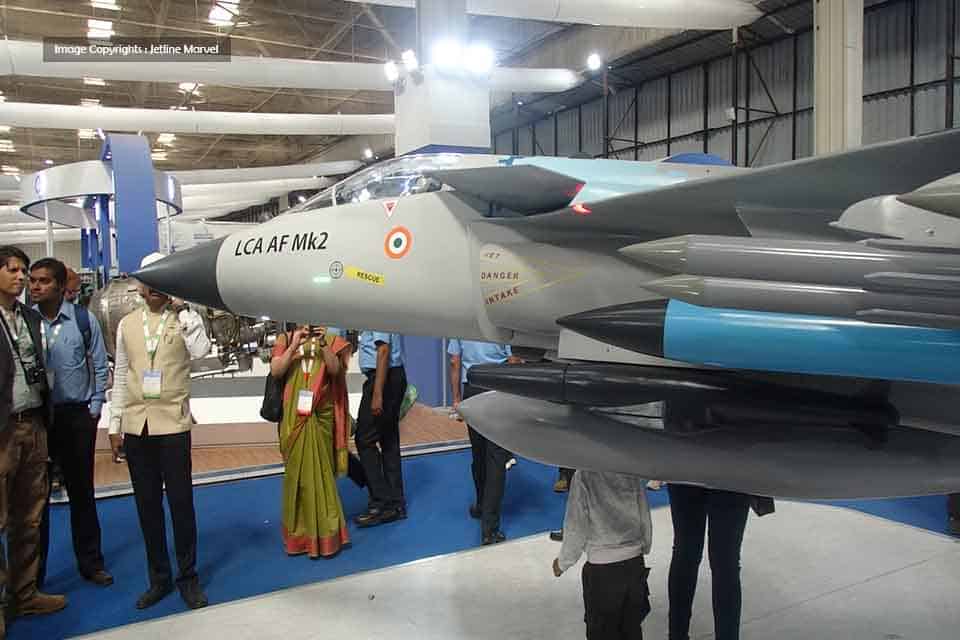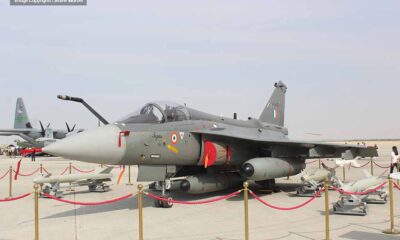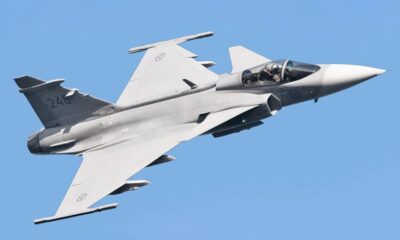Aerospace
Indian Tejas Mark 1 vs the Korean FA 50. which is most appropriate for RMAF malaysia
The Malaysian government is currently evaluating the final bids from both nations so that it may make the best decisions.

Now that the two nations have agreed upon the Malaysian Air Force aircraft tenders, The Malaysian government is currently evaluating the final bids from both nations so that it may make the best decisions.
We will discuss each of the offerings from both countries in the article.
About KAI – FA 50
A family of South Korean supersonic advanced jet trainers and light combat aircraft known as the KAI T50 Golden Eagle was developed by the Korean aerospace industry in collaboration with the United States Lockheed Martin Company.
Why did Tejas not win the RMAF tender? Here are four potential reasons.(Opens in a new browser tab)
Its first flight took in 2002, and it joined the Republic of Korea’s air force in 2005. T-50B, TA-50, and FA-50 are the aerobatic and combat versions of the T-50 that have been further developed.
Since 2001, it has produced 200 aircraft, which are now being used by the air forces of three different nations: Iraq, Indonesia, and the Philippines. Additionally, Thailand had placed an order for 12 aircraft, Colombia for 20, and Poland for 48.
This aircraft will reportedly be compared to the F16 aircraft, and pilots who have trained on it will have no difficulty flying the FA 50 aircraft.
These are two new challenges Malaysia faces in purchasing FA50.(Opens in a new browser tab)
About HAL – Tejas Mark1
Hindustan Aeronautics Limited (HAL) created the HAL Tejas, a single-engine, delta-wing, light multirole fighter for the Indian Air Force and Indian Navy.
Tejas is currently a member of the India Air Force’s No. 45 Squadron, which will by 2025 replace its entire inventory of outdated Mig 21 aircraft.
Indian HAL has extensive experience producing aeroplanes and has produced numerous aircraft systems in partnership with numerous nations. HAL currently develops helicopters, fighter jets, trainer planes, and commercial planes in addition to maintaining larger defence planes like the Russian Sukhoi and other planes in its platform.
Now that the Philippines has become a customer for its helicopters and weaponry, India’s HAL is hunting for a foreign buyer for its aircraft.
Does Malaysia choose the Tejas fighter jet from India?(Opens in a new browser tab)
Additionally being promoted to Mark 2 status, this aircraft will have some extremely cutting-edge characteristics, making it a 4.5-generation fighter jet.
What is HAL providing to RMAF under the deal?
It will offer MRO (Maintenance, Repair, and Overhaul), and Aviation Management Courses, and promote regional manufacturing. Additionally, it will provide maintenance and upgrades for the Russian Su-30MKM and Hawk aircraft owned by Malaysia.
The Indian BVR missiles, which are similar to the all-weather Astra missiles, are favouring HAL in the Malaysian selection. Additionally, the Royal Malaysian Air Force may receive BrahMos missiles as a result of the Tejas agreement (RMAF).
HAL has also offered to support the RMAF in upgrading its Hawk fleet. Other HAL platforms like HTT-40 basic trainer, Dornier-228 light maritime reconnaissance aircraft, Dhruv Advanced Light Helicopter (ALH) and the Light Combat Helicopter (LCH) have the potential to be inducted by RMAF in the future says HAL. and further, it will upgrade the aircraft for AMCA and Tejas mark2
What South Korea proposes to the RMAF in the FA 50 contract.
Korea Aerospace Industries (KAI) also proposed to build a final assembly facility for its FA-50 Block 20 light fighter at Kuantan as part of its bid to win the Fighter Lead-In Trainer/Light Combat Aircraft (FLIT/LCA) programme from the Royal Malaysian Air Force (Tentera Udara Diraja Malaysia/TUDM).
The construction of the facility will cost between MYR440 million and MYR560 million (about USD100.3 million and USD127.7 million at the current exchange rate). A maximum combined output of two aircraft per three to six months will be produced by either one or two final assembly line(s), depending on Malaysia’s choice and the results of KAI’s on-site study.
The fighters that Malaysia’s RMAF is looking for.
The programme mandates the purchase of supersonic light fighter aircraft with aerial refuelling, Beyond Visual Range (BVR) combat capability, and at least 30% Malaysian-made componentry. Additionally, it mandates that the manufacturer begin deliveries within 36 months of contract signing.
Tejas boasts a higher service ceiling, maximum takeoff weight, and top speed despite both having roughly equivalent ranges. Another positive aspect of integration is that Malaysia uses a combination of NATO and Russian-made equipment, similar to India.
RMAF, is expecting to pay in the region of $900 million for 18 fighters, or $50 million per fighter.
Which fighter plane do you think will be best for Malaysia’s defence? Let us know in the comments below.

Aerospace
Indigo will soon launch Air Taxi Service in India

InterGlobe Enterprises, the parent brand of IndiGo, is set to revolutionize travel in India with its upcoming air taxi service.
Scheduled for a potential launch in 2026, this innovative venture promises a seamless journey for passengers between two bustling hubs. Delhi and Gurgaon in Haryana. The forthcoming service is projected to revolutionize the daily commute, offering passengers a swift aerial journey covering the distance in a mere 7 minutes.
This remarkable efficiency contrasts starkly with the conventional 90-minute drive, underscoring the immense time-saving potential for commuters. The anticipated fare, ranging from Rs 2,000-3,000, makes this innovative mode of transport not only swift but also remarkably competitive in pricing.
At the heart of this ambitious endeavor lies a strategic partnership with Archer Aviation, a pioneer in electric vertical takeoff and landing (eVTOL) aircraft technology. Under this collaboration, Archer will supply 200 state-of-the-art eVTOL aircraft, representing an investment of US$ 1 billion. These cutting-edge aircraft, capable of accommodating up to four passengers alongside the pilot, epitomize the future of sustainable air travel.
Powered by six battery packs, Archer’s eVTOL aircraft boast rapid charging capabilities, enabling a swift turnaround between flights. With a charging time of just 30-40 minutes, these eco-friendly aircraft ensure minimal downtime, maximizing operational efficiency.
Similar services are anticipated to be introduced by the joint venture in Bengaluru and Mumbai as well. Nevertheless, the service rollout period has not yet been made public by the company. Next year, it is anticipated to get its certification. Following this, the company will start the certification procedure with the Directorate General of Civil Aviation (DGCA).
Aerospace
Which is bigger 777x or 787 aircraft ?

The 777X is a new series of the Boeing 777 family and is designed to be larger and more efficient than its predecessor. It features two variants: the 777-8 and the 777-9, being the larger of the two.
The Boeing 777X emerges as the larger sibling within the Boeing family, representing a significant leap forward in both size and efficiency. Comprising two variants, the 777-8 and the 777-9, the latter takes the crown as the larger of the two. With its expansive fuselage and impressive wingspan, the 777X is tailored for long-range journeys and boasts a substantial passenger capacity.
On the other hand, the Boeing 787, affectionately known as the Dreamliner, occupies a niche in the market as a smaller yet formidable aircraft designed for medium to long-range flights. Its distinguishing feature lies in its composite fuselage, a technological marvel that renders it lighter and more fuel-efficient compared to conventional aluminum counterparts. The Boeing 777X is larger than the Boeing 787 aircraft.
When it comes to passenger capacity, the 777-9 reigns supreme, typically accommodating a sizeable contingent of 400-425 passengers in its standard configuration. In contrast, the 787, with its more modest dimensions, typically carries between 240-290 passengers, depending on the variant and layout.
One of the remarkable innovations introduced with the 777X is its folding wingtips, a feature designed to address the logistical challenges of accommodating such a large aircraft in conventional airport gates. These folding wingtips enable the 777X to retract its wings, allowing it to fit into gates designed for smaller aircraft while still reaping the benefits of an extended wingspan during flight, thereby enhancing fuel efficiency and operational flexibility
Aerospace
China Secures Production Certificate for Mass Production of Pilotless eVTOL Aircraft

The first passenger-carrying pilotless electric vertical takeoff and landing (eVTOL) aircraft in the world, the EH216-S, has received the Production Certificate for its eVTOL aircraft from the Civil Aviation Administration of China (CAAC).
This is a significant milestone for EHang Holdings Limited, the leading UAM technology platform company in the world. This outstanding accomplishment is another big step towards mass manufacturing for the eVTOL aircraft and the ensuing commercial operations, building on the ground-breaking acquisition of the Type Certificate and the Standard Airworthiness Certificate for the EH216-S.
The PC is a crucial certificate that the aircraft maker receives from the CAAC, the country’s aviation authority. By obtaining this certificate, EHang has demonstrated that it has set up a quality management system for mass production that satisfies the airworthiness regulation standards set forth by the CAAC, and the company has been given permission to continue producing mass quantities.
It is also a strong guarantee of the calibre of the goods made by EHang. Raw materials, supplier management, manufacturing organisation, production quality control, aircraft pre-delivery test, after-sales repair and maintenance, etc. are all included in the mass production quality management system for the EH216-S.
To ensure that every aircraft and its components that roll off the production line strictly adhere to the approved type design and safety requirements, the system sets clear guidelines and documentation for every step in the production procedure. This ensures comprehensive traceability and safety control.




























